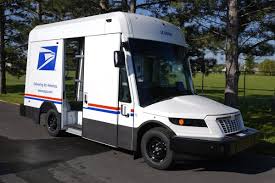Imagine you are purchasing your favorite vehicle. You go to a dealer and the dealer shows you two vehicles that are identical in every way, (i.e. make, model, year, mileage, color, features, condition, and same previous owner) except for the fact that one of the two vehicles has been in a collision before. Now the vehicle with the prior collision has been repaired and is just as good as the other one.
After seeing the two vehicles you ask the dealer for the price and he tells you that “they are both the exact same price”. Which one would you buy? The one without a wreck, right? Exactly!
No one would buy a vehicle with a prior collision over a vehicle with no prior collision unless the price is reduced. This reduction in price is essentially what is known as “diminished value”. Your vehicle loses value the very second it is in a wreck,even if the vehicle is later repaired.
YOU ARE COVERED!
The good news is that your insurance policy, for which you pay monthly premiums, covers the diminished value of your vehicle in the event of a collision. If the collision was caused by the other party, then their insurance would cover the diminished value of your vehicle.
HOW DO I KNOW WHAT THE DIMINISHED VALUE OF MY VEHICLE IS?
Insurance companies seem to think that the formula below accurately calculates the
diminished value if your vehicle.
1. Cap diminished value at 10% Max
2. Add a 0 to 1 Damage Severity Modifier
3. Add a 0 to 1 Mileage Modifier
This formula, known as the 17c formula, basically says that (1) a vehicle’s diminished value cannot be more than 10% of the vehicle’s value; (2) the 10 % cap is reduced by a damage modifier based on the severity of the damage; and (3) the diminished value is further reduced by the mileage of the vehicle.
There are two issues with the 17c formula as applied by insurance companies. The first is that the insurance companies put a 10% cap on the diminished value of a vehicle without offering any explanation or justification for the cap. The second is that the value of the vehicle from the beginning takes the “mileage” into consideration. Because of the “mileage modifier” the “mileage” is being considered twice. Therefore adding a mileage modifier to the formula makes no sense. Although not always the case, Insurance companies tend to arrive at a diminished value that is much lower than the actually loss of value of a vehicle. Discounting a nearly brand new $23,000 Subaru $700 is not enough! Therefore it serves your interest best to hire an independent Diminished Value Appraiser such as Diminished Value of Georgia (https://diminishedvalueofgeorgia.com).
Below is an example of a real case where the 17c formula was used for a 2017 Subaru Forester with 3,000 miles, valued at $23,125.00. This vehicle suffered extensive damage in a collision and had near $6,000.00 in repairs done to it. The insurance company said the diminished value of the Subaru was $785.09 applying the 17c formula as done below.
1. Max 10% 23,125.00 x 10% = $2,312.50
2. Damage Modifier .35 x 2,312.50 = $809.38
3. Mileage Modifier .97 x 809.38 = $785.09
There are many factors that need to be considered when calculating DV, which insurance companies neglect to do. One such factor is the pricing of comparable vehicles with and without prior wrecks. Another factor is the actual damage and repairs done to the car. For example a vehicle which sustained “frame damage” will lose more value than a vehicle that did not, regardless of the cost of repairs. For the same 2017 Subaru mentioned above, Diminished Value of Georgia appraised that the vehicle had a diminished value of $2,775.00. (See Report)







